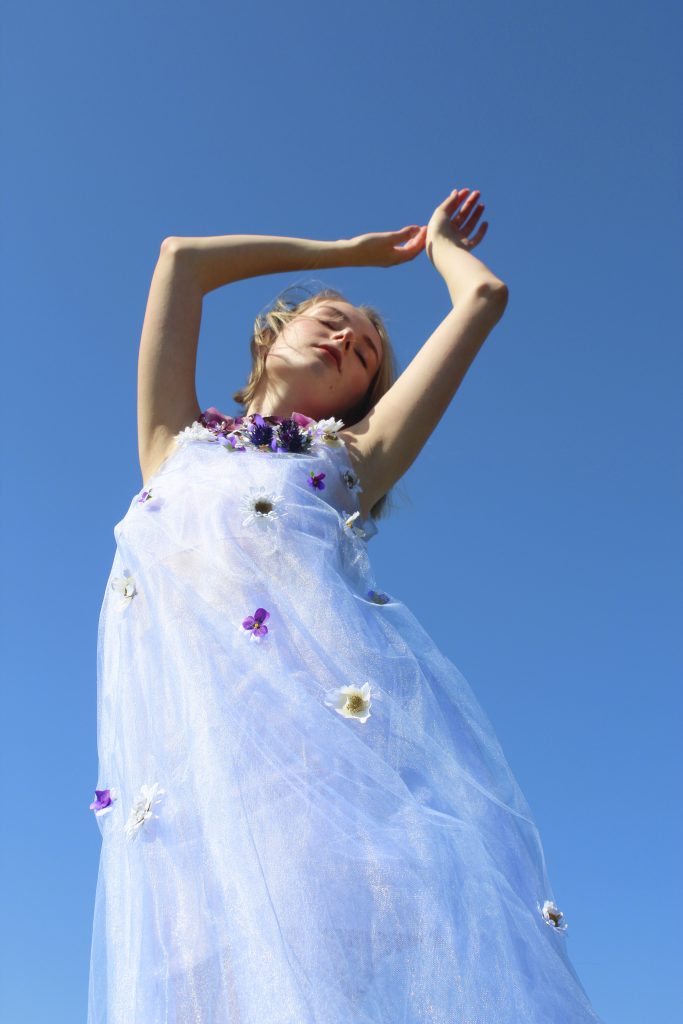Flashes of paint, ridges of cardboard, ripples of fabric. No matter the medium, Palo Alto High School boasts a vibrant art community through its numerous classes, clubs and community events. For many dedicated artists, Paly AP studio art classes are the final step in their high school artistic journey.
AP artists are tasked to explore a chosen theme through a year-long portfolio in any medium they wish. Here’s a closer look at three Paly artists who have developed their portfolios and pursued diverse artistic avenues.
Reese Ford: Simulating synesthesia
With a Zoom window framed by the colorful paintings propped up against her bedroom wall, Reese Ford, a Paly junior in AP Studio Art Drawing, describes using painting to express her experiences with synesthesia.
“Synesthesia allows me to see colors when I read and hear music,” Ford said. “In my art-making process I often like to listen to a particular song as many times as I can and attempt to illustrate my colorful visions.”
Synesthesia is a neurological condition in which sensory stimulations, such as sound, simultaneously trigger other senses, such as sight and taste. According to Ford, while the experience can at times be intense and overwhelming, synesthesia has also been a major source of creative inspiration.
“I often like to listen to a particular song as many times as I can and attempt to illustrate my colorful visions.”
— Reese Ford, junior
Her AP portfolio is an explosion of color and energy, each piece including realistic and abstracted components in an array of brilliant hues. Ford used mainly oil paints and alcohol-based ink pens to develop her series of whimsical pieces, and she sums up the overall concept behind the collection as a “mirage, an illusion, a projection.”
In one piece — a vibrant self portrait created with oils — Ford’s face is painted in an array of purple-blue tones, and a sea of psychedelic colors flow from her chest to surround her figure. For Ford, this painting especially stands out because of the time she dedicated to creating it.
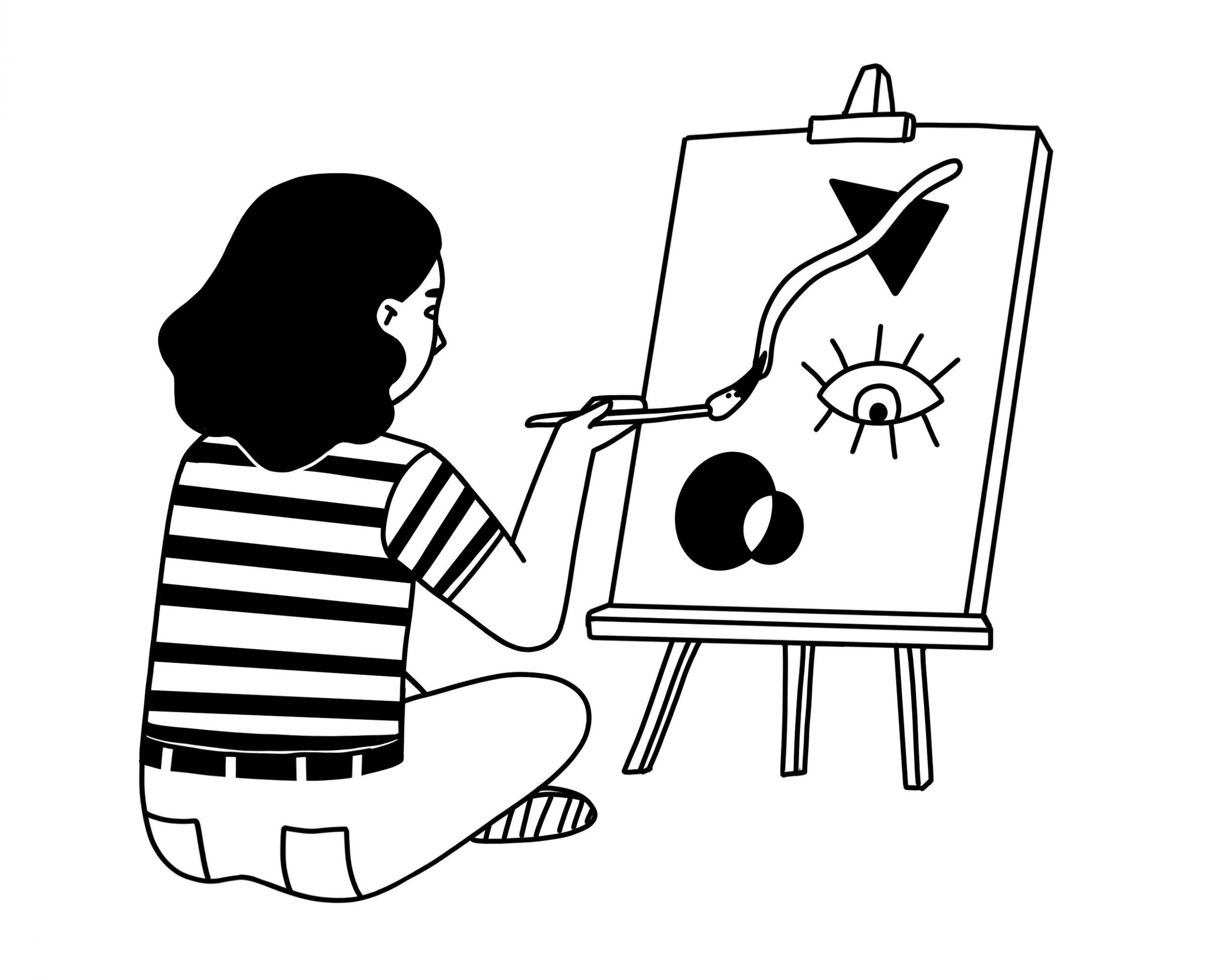
“Some of the pieces I’ve made have been so rushed this year,” Ford said. “With this painting, I really put a lot of effort into it and I’m glad that it turned out well.”
Other pieces convey more fantastical themes, depicting unnamed figures and landscapes awash in a kaleidoscope of colors. One portrays a mysterious woman suspended in outer space, enveloped in a circle of multicolored planets and music notes.
Ford also draws inspiration from the times she feels overwhelmed from the sensory overload. She describes developing a painting to show the overstimulation she once experienced at a concert, trying to convey the feelings of anxiety and chaos.
“I was inspired by a classical music piece I saw performed live a couple of years ago,” Ford said. “I used neon gel pens to create intense colors but also isolated a square in the center of the drawing so that I could use realistic colors, representing the reality of the situation amidst the chaotic colors.”
Andrew Guillet: Cardboard creations
Unlike students in AP 2D art classes, many AP Sculpture students, including senior Andrew Guillet, have chosen not to center their designs around a theme this year. In a typical year, students are free to experiment with materials and eventually end up with a 20-piece portfolio. However, due to material availability during distance learning, that format has changed to center around cardboard.
“Typically in class you would have had all the past years to find your medium, what you work with in your own style,” Guillet said. “But this year, we kind of changed it so that we have mainly a very easy-to-work-with, at-home thing.”
“It [AP Sculpture] has definitely helped me understand that I have an ability to just create things.”
— Andrew Guillet, senior
Despite this switch, Guillet has managed to create a collection of cardboard pieces that capture his creativity. His favorite piece — an elegant sword — layers spires of cardboard towards a tapered end. A white handle curls up toward the blade, where slight variations in the tone of each tier creates depth. The result is a seemingly simply but startlingly complex piece, which holds a special historic significance for Guillet.
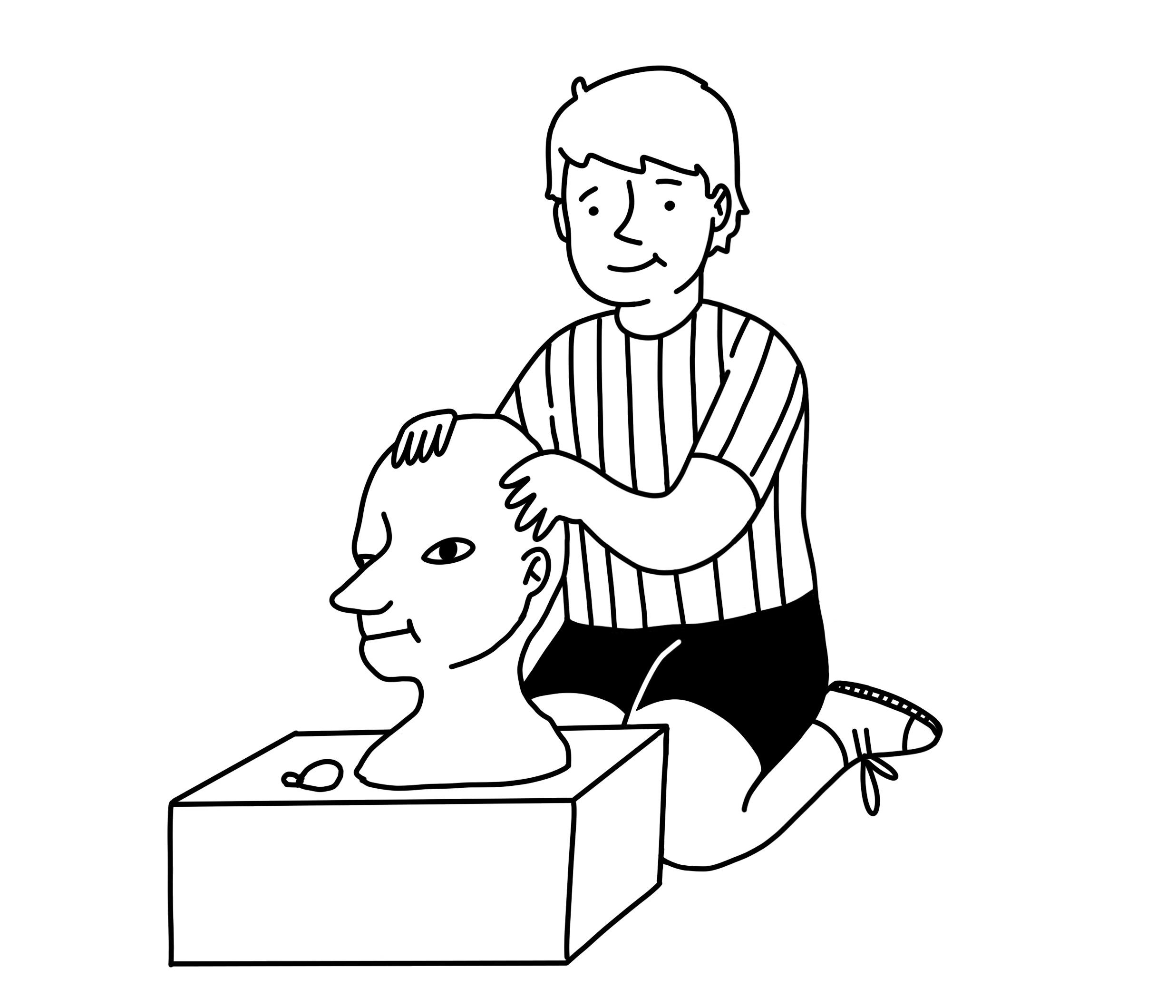
“The reason I chose to create a sword is because I could use references from historic swords, while still adding my own artistic flair,” he said.
History has been a common inspiration for Guillet, who also engages in glassblowing outside of school.
“Especially in glassblowing, I have been fascinated with the old style of glassworking from first century Rome and Venice, which is why a lot of my work is simple yet refined cups and vases,” Guillet said.
Yet although glassblowing hasn’t been part of his AP portfolio this year, Guillet has found ways to work outside of cardboard, such as one project of a face he created earlier when clay was available.
“So much of art is about making fictional things, so sculpting eyes was a really good way to refine my skills,” Guillet said.
While the change in class format has been challenging, overall, Guillet’s experiences in AP art have helped him realize his capabilities as a problem solver and innovator.
“It [AP Sculpture] has definitely helped me understand that I have an ability to just create things if I want to,” Guillet said. “Before, it would just be an idea if I had a solution to something, but now I could actually create that solution.”
Amanda McVey: Passion for fashion
“It’s so much more than just a piece of cloth on a hanger or on a person.”
For as long as she can remember, senior Amanda McVey has been fascinated by fashion design. Now, she’s brought that passion into the core of her AP Studio Art work.
“What I did is make a mood board for what my personal brand would be,” McVey said. “If I were to be a fashion designer with a clothing brand, what would my clothing brand look like? Who would wear my products? And what kind of person would they be?”
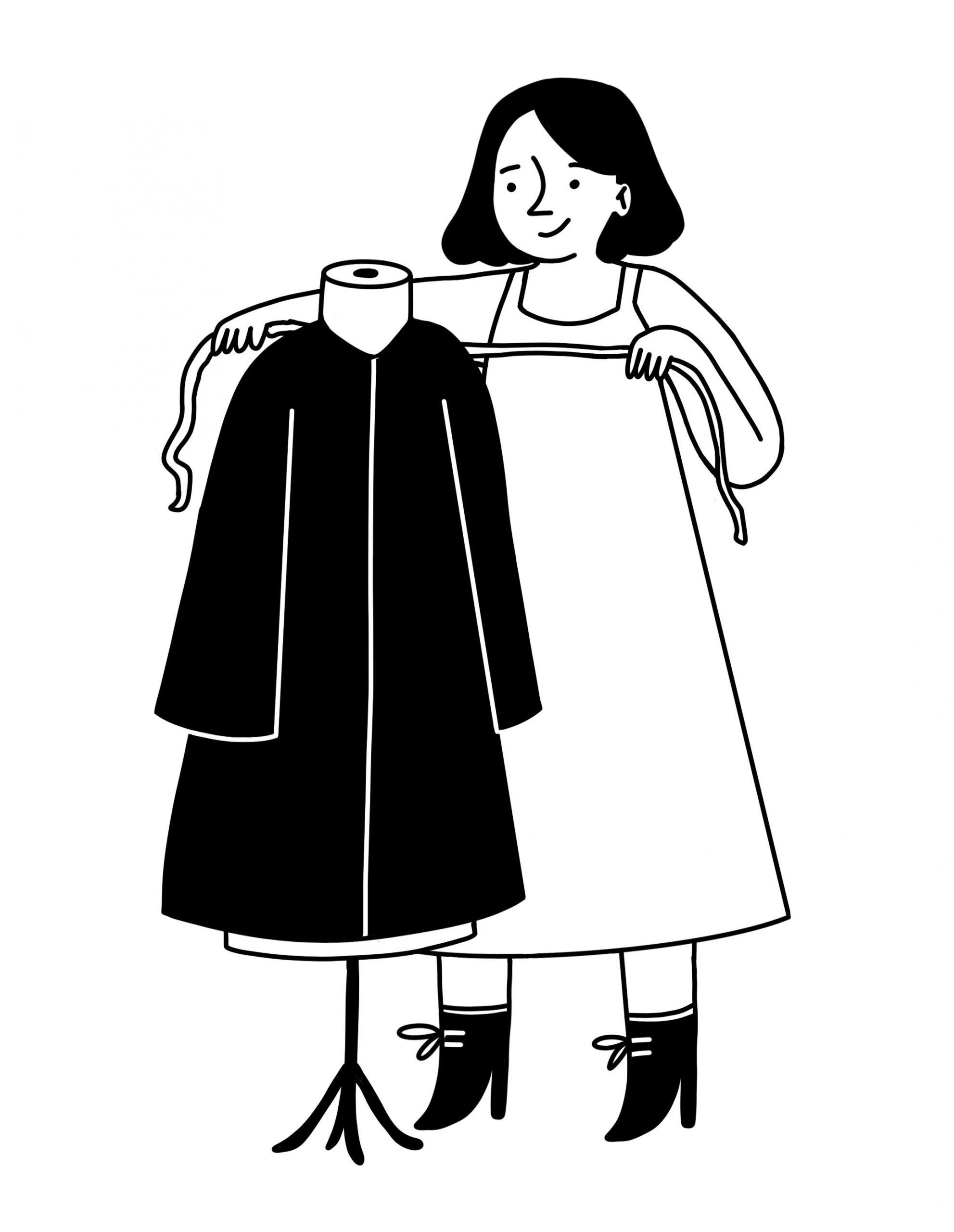
Looking through this personal lens is what ultimately inspired McVey’s portfolio theme of contemporary femininity, which she describes as a combination of traditionally feminine ideals with traditionally masculine ones.
“It’s not like man versus woman,” McVey said. “It’s all that femininity can be. It’s duality, it’s juxtaposition, and I really like to think of it as both a melting pot and a spectrum of traits.”
McVey chose to submit her work as an AP Design portfolio of two-dimensional illustrations. However, she is also including one three-dimensional piece that she developed, designed and created herself: a flowing blue dress dotted with silk flowers. Bunches of periwinkle fabric spill from a collar of purple and cream petals. Dark blooms of maroon flowers cluster over the heart, alluding to the inspiration behind the piece.
“It was a cultural, historical study of the painting ‘Ophelia’ by John Everett Millais, which depicts the character Ophelia from Shakespeare’s ‘Hamlet’ laying in the river,” McVey said. “She’s either interpreted as naive, innocent, just a virgin character, or she’s a really sexual character that her father and brother are trying to cage in.”
“There’s a lot of symbolism that can be said in a piece of clothing. Fashion can be used in so many different ways, you can hide yourself or put yourself out there and everything in between.”
– Amanda McVey, senior
To McVey, the flowers in both the painting and dress play significant roles; the orchids are a symbol for sexuality, the daisies represent innocence and the nettles depict pain. Incorporating themes and elements from Millais’ painting, McVey conveys Ophelia’s story through fabric.
“[In the painting,] she’s laying in the river, so I wanted it [the dress] to take sheer blue fabrics so it looks like wet fabric, which further plays into her sexualized nature,” McVey said. “In a lot of statues, you see women in this fabric. It looks wet, it’s very revealing of the body, so I wanted to play into that.”
McVey plans to professionally pursue her love of fashion in college and as a career to continue telling stories through innovative design.
“There’s a lot of symbolism that can be said in a piece of clothing,” McVey said. “Fashion can be used in so many different ways, you can hide yourself or put yourself out there and everything in between.”
Improving in isolation
This year, AP art saw dramatic changes in class format and experience as students and teachers adapt to working from home. Ford discusses how the year’s restrictions have posed both unforeseen challenges and opportunities for growth.
“[Being at home] helps me learn to develop an eye for critiquing my art more, since there’s not always time to talk to the teacher,” Ford said. “So you have to ask yourself, ‘How could I improve?’”
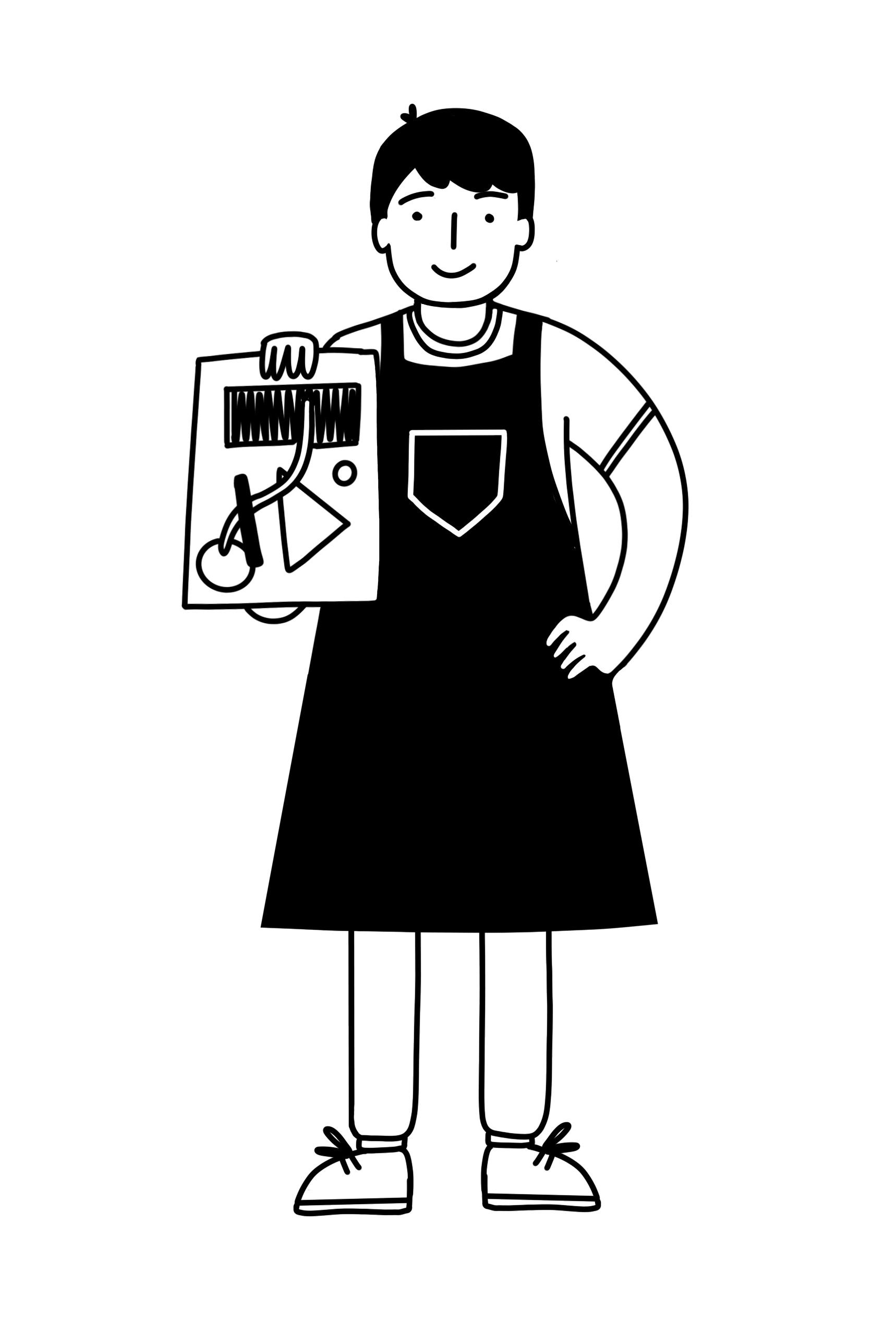
The shift, according to Guillet, now has students working mainly with cardboard. It’s been a challenging adjustment for Guillet, who misses the class community and buzzing art room environment.
“I think the new challenge is just getting in the headspace,” Guillet said. “One of the main reasons I like to hang out in the art room is because I like the people and the environment, with everyone making things. It makes me want to make things too. It’s a little harder when I’m stuck in my room alone forced to cut cardboard.”
McVey also resonates with this experience, and she describes how the rigorous pacing of the class has pushed her to create with greater focus on a larger vision.
“There was a long time where … I was doing fashion because I liked the aesthetic or I liked creating things that looked good, but over the past two years I really shifted into this mindset of ‘What story is this art or fashion going to tell? Why am I making this, why is it important?’” McVey said. “That’s been a really crucial development in my work as an artist and just my identity as an artist.”




